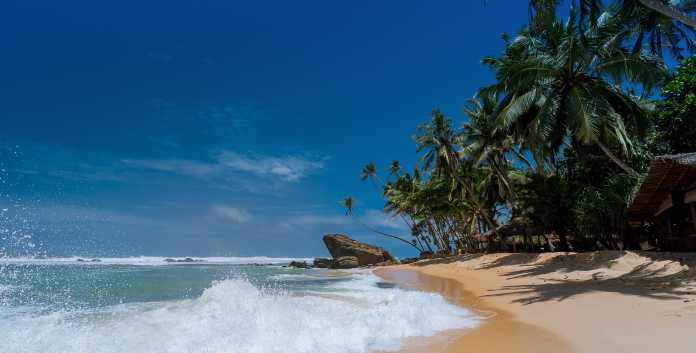Among the top Google News search results today for “climate change” is the Associated Press (AP) story, “Leaders to UN: If virus doesn’t kill us, climate change will.” In the article, the AP claims that some like island nations like Tuvalu will completely disappear within 75 years due to rising seas. Scientific evidence, however, demolishes such claims.
Current sea-level rise is not at all unusual historically. Also, several peer-reviewed studies in recent years demonstrate that, even as the world has warmed modestly, many island nations are seeing their land masses increase, not shrink.
As detailed in Climate at a Glance: Sea Level Rise: sea level has been rising at a relatively steady pace of approximately one foot per century since at the mid-1800s, which was long before coal power plants and SUVs. Moreover, the United Nations Intergovernmental Panel on Climate Change (IPCC) confirms here has been no significant recent acceleration.
It may be true that some low-lying islands are threatened by relentless but entirely natural sea-level rise. However, as NASA reports, sea level always rises between ice ages as ice sheets retreat. Also, many islands and island nations, perhaps a majority in many locations, are actually seeing their land masses increase.
The island of Hawaii, for example, added 543 acres of new land due to lava flows between January 1983 and September 2002. In 2018 alone, Popular Mechanics reports, volcanic activity added an addition 875 acres to Hawaii Island. Volcanic activity is both creating a new Hawaiian coastline and adding height to the island, both of which diminish any threat to the island’s inhabitants from rising seas.
Research shows other natural factors are adding to the land mass of coastlines and tropical islands elsewhere around the globe, as well.
As discussed in Climate Change Weekly 356, recent research shows coastal mangroves are adding land to coasts. Rising seas bring sediments and other materials that mangroves capture in their roots. The matter is then buried in the wet ground, storing the carbon dioxide and building up the land.
As early as 2010, research showed the small island nations of Tuvalu and Kiribati are actually growing, not being submerged beneath the seas. As discussed by the BBC, one study examined 27 islands spanning Tuvalu, Kiribati, and the Federated States of Micronesia, and found that over the last 60 years, 80 percent of the islands either maintained their size or grew, with some growing dramatically.
The 2010 scientific findings were confirmed and expanded upon in 2015 when the same group of researchers published a peer-reviewed study of 600 coral reef islands in the Pacific and Indian Oceans. The researchers found approximately 40 percent of those islands remained stable, and 40 percent grew in size. As National Geographic reported, “Some islands grew by as much as 14 acres (5.6 hectares) in a single decade, and Tuvalu’s main atoll, Funafuti—33 islands distributed around the rim of a large lagoon—has gained 75 acres (32 hectares) of land during the past 115 years.”
As a result, despite political gimmicks designed to induce climate “reparations” from Western democracies, Tuvalu’s government feels confident enough in its long-term future that it is building brand new government buildings. In addition, the population on Fongafale, Tuvalu’s largest island, has increased by 33 percent.
Not only is Tuvalu not being swallowed by the sea, but research published in 2018 by GIScience & Remote Sensing found 15 of the 28 uninhabited islands on Tuvalu’s Funafuti Atoll saw their shorelines increase in recent years.
In 2019, the same group of researchers conducted laboratory experiments to explain the islands’ growth and found strong wave action washed sand and gravel inland resulting in many atolls and islands being “continually replenished by sediment from the surrounding reef.” In other words, the natural interaction of land and sea protect islands from sea-level rise. Even on islands where some shoreline is lost to the seas, the researchers found storms and wave action carrying sand and gravel inland adds to the height of such islands, making them more resistant to further rising seas.
Seas are rising and will continue to rise as they did, without any help by humankind, for centuries and millennia. Even so, the evidence shows many coastlines and island nations are actually gaining acreage, gaining height, and supporting growing populations.





















The other side of the coin, thank you for underlining how nature is responding to the climate cycle.
[…] rising seas are swallowing the nation and its islands. However, as documented by Climate Realism here […]
[…] as documented by Climate Realism here and here, the majority of Tuvalu’s islands are growing in size, not […]